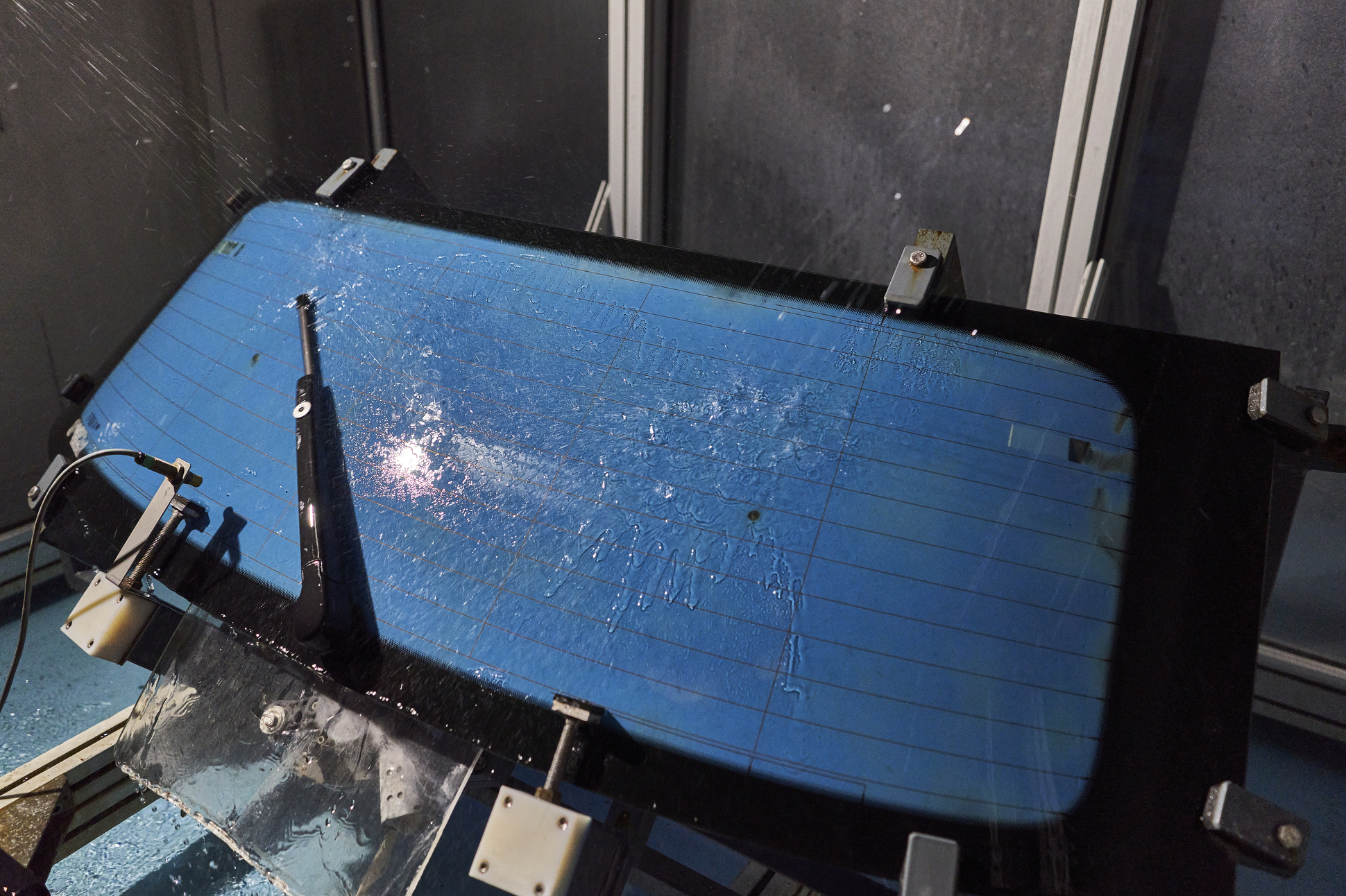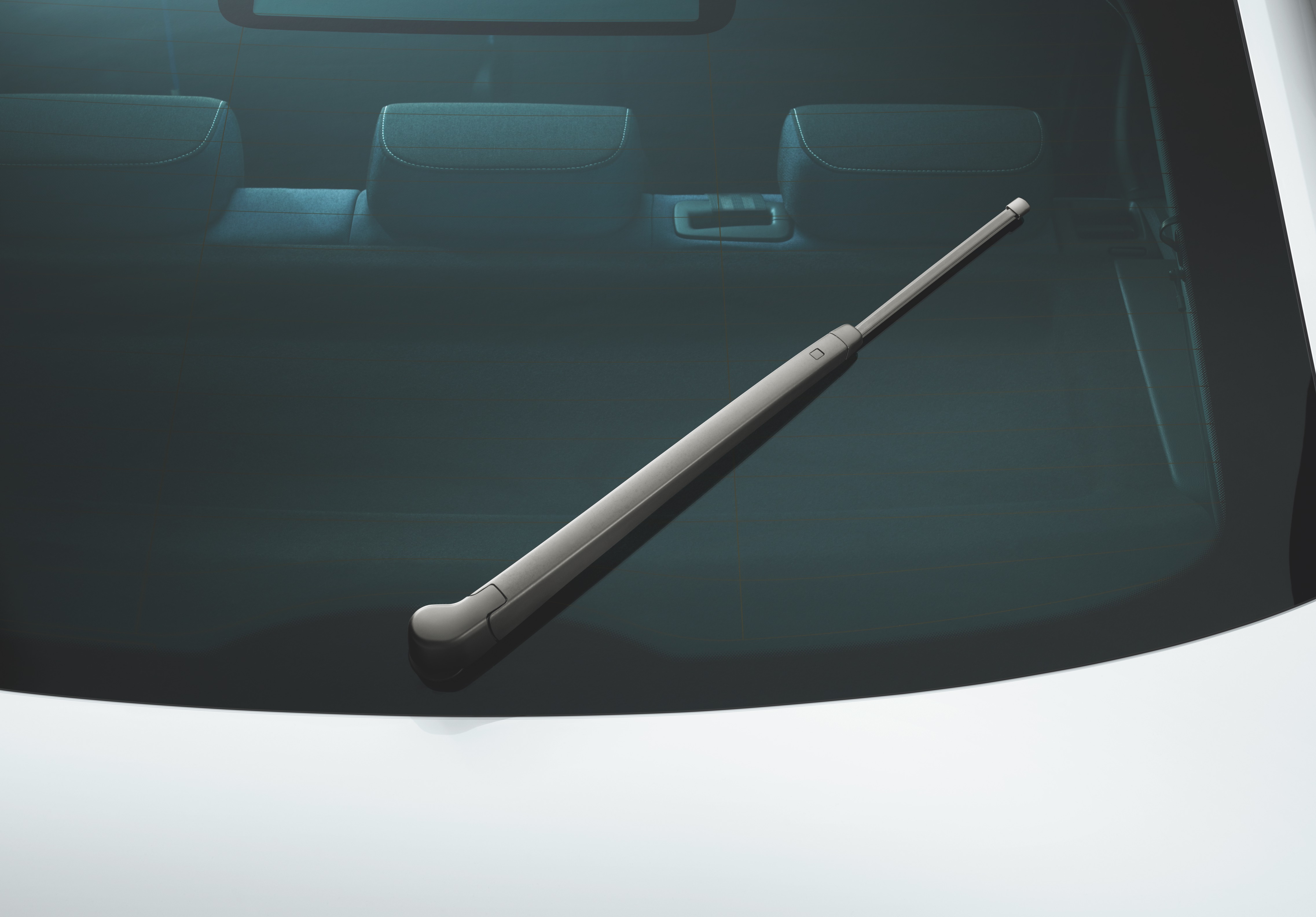Fine-tuning in a wind tunnel
“The motor itself is connected to a kinetic mechanism via which the rotary movement is transmitted to the wipers. Development places great emphasis on the functionality and robustness of the system as a whole at low and high temperatures and at high speeds. We also pay close attention to the noise generated by the system. The system is designed to function flawlessly at temperatures from minus thirty to plus seventy degrees,” says Švejdar, adding that the wiper blades are tested over five hundred thousand cycles. Needless to say, it’s a good idea to replace your blades much sooner, with experts recommending that new blades should be fitted every six months.
 Front windscreen wiper testing
Front windscreen wiper testing
When work starts on the development of a new car model, the amount of available space, the surrounding parts and the design of the car itself are factored into the design of the wiper system. The wipers supplier then adapts the basic design to its technologies. Testing is done by both the carmaker and the wipers supplier. The process as a whole takes roughly three years.
 Rear windscreen wiper testing
Rear windscreen wiper testing
The wipers’ behaviour is fine-tuned down to the smallest detail in a wind tunnel. The propulsion system, the curve of the frame, the pressure exerted and the shape of the flexor have to be perfectly calibrated so that airflow does not lift the blade off the glass in places. Considerable attention is also paid to the ideal interaction of wipers and sprays, in conditions ranging from stationary to a car’s top speed. This should make it obvious that original wipers are very different from generic products that are usually intended for a wide range of models from various manufacturers. By contrast, original parts are tailor-made for a specific model.
































